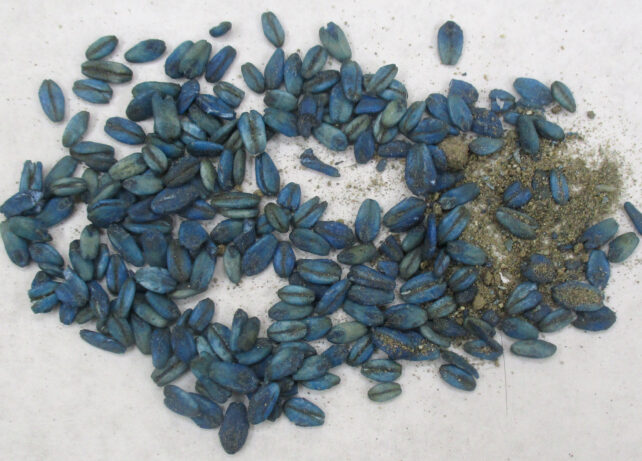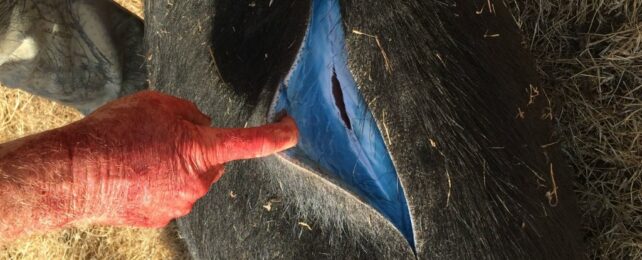Game hunters have found startlingly 'neon blue' flesh inside of wild pigs in California, triggering advisory statements on potential contamination.
"I'm not talking about a little blue," Dan Burton, owner of a wildlife control company, told Salvador Hernandez at The Los Angeles Times. "I'm talking about neon blue, blueberry blue."
An investigation by local authorities found the dramatic color change was caused by rodenticide poisoning and has issued a warning across the Monterey County area. This poison is often sold dyed for identification, and its use has been highly restricted in California since 2024.
Related: We Can Make Powerful Nature-Inspired 'Pesticides' Without Poison, Scientists Say
"Hunters should be aware that the meat of game animals, such as wild pig, deer, bear, and geese, might be contaminated if that game animal has been exposed to rodenticides," says pesticide investigations coordinator Ryan Bourbour from the California Department of Fish and Wildlife (CDFW).
"Rodenticide exposure can be a concern for non-target wildlife in areas where applications occur in close proximity to wildlife habitat."

Concerningly, this isn't the first time wild pigs in the region have had their innards tainted blue.
A popular rodent control in agriculture, diphacinone is a first generation rodenticide that acts as an anticoagulant, causing severe internal bleeding.
Predators, including humans, who eat an animal poisoned with the toxin can become ill themselves; while the chemical breaks down faster than second generation rodenticides, diphacinone remains active in the dead animal's tissues for some time, even if cooked.

Wildlife groups globally have long been urging us to stop relying on chemical pesticides because of the collateral damage these poisons inflict. From owls to bees, pesticides are causing great harm to wildlife.
Non-target animals either consume it directly or are impacted by secondary exposure when eating other animals that have ingested the poison, adding further strain on already endangered species.
Wild pigs, hybrids between domestic pigs and wild boars, are omnivores that would eat both the poisoned rodents and the bait.
Pesticides are harmful to exposed humans as well. They have been linked to declining sperm rates, diabetes, cancers, and other health conditions.
Integrated pest management aims to mitigate the risks of high-risk control practices by combining multiple strategies such as encouraging natural predators, construction of fences and traps, and other deterrents.
The CDFW is urging anyone who encounters blue animals or other abnormalities to report them to the Wildlife Health Lab, details here.
